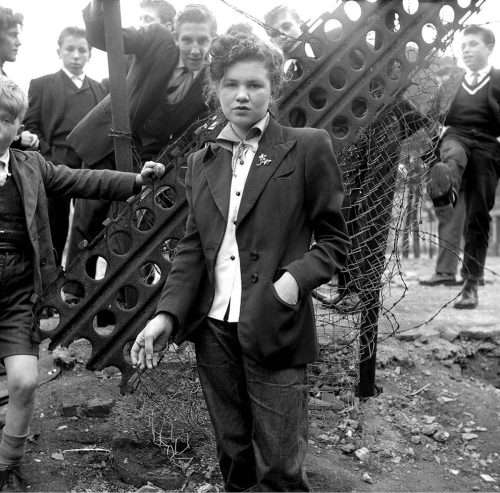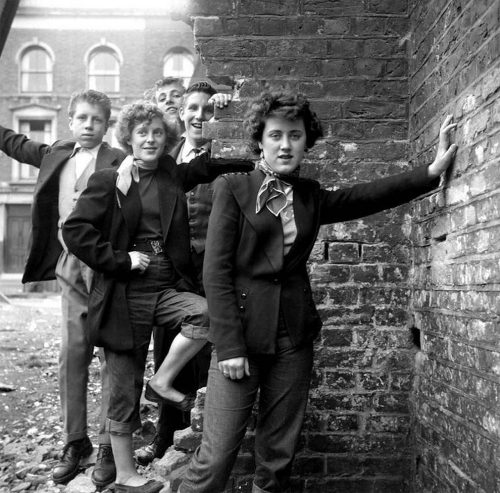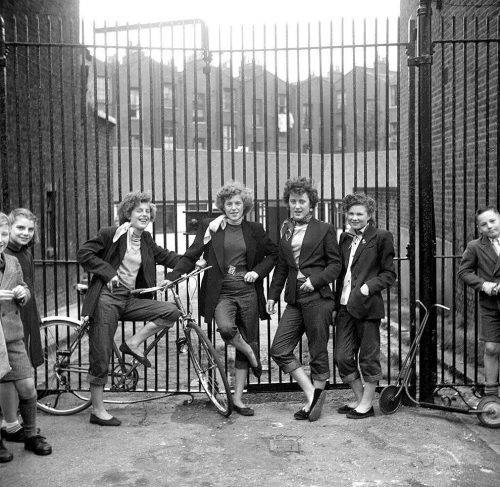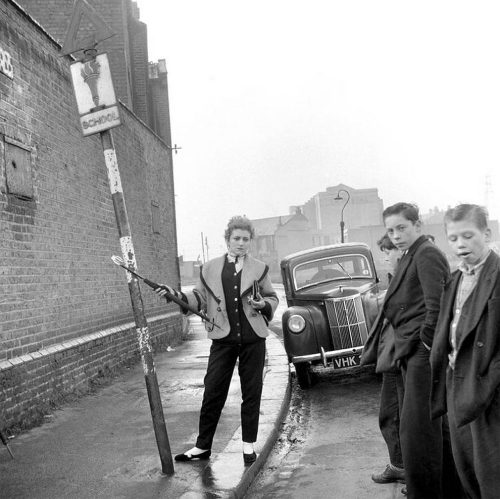(Image Caption: If This Picture Makes You Feel Uncomfortable, You Feel Empathic Pain. This Sensation

(Image caption: If this picture makes you feel uncomfortable, you feel empathic pain. This sensation activates the same brain regions as real pain. © Kai Weinsziehr for MPG)
The anatomy of pain
Grimacing, we flinch when we see someone accidentally hit their thumb with a hammer. But is it really pain we feel? Researchers at the Max Planck Institute for Human Cognitive and Brain Sciences in Leipzig and other institutions have now proposed a new theory that describes pain as a multi-layered gradual event which consists of specific pain components, such as a burning sensation in the hand, and more general components, such as negative emotions. A comparison of the brain activation patterns during both experiences could clarify which components the empathic response shares with real pain.
Imagine you’re driving a nail into a wall with a hammer and accidentally bang your finger. You would probably injure finger tissue, feel physical distress, focus all your attention on your injured finger and take care not to repeat the misfortune. All this describes physical and psychological manifestations of “pain” – specifically, so-called nociceptive pain experienced by your body, which is caused by the stimulation of pain receptors.
Now imagine that you see a friend injure him or herself in the same way. You would again literally wince and feel pain, empathetic pain in this case. Although you yourself have not sustained any injury, to some extent you would experience the same symptoms: You would feel anxiety; you may recoil to put distance between yourself and the source of the pain; and you would store information about the context of the experience in order to avoid pain in the future.
Activity in the brain
Previous studies have shown that the same brain structures – namely the anterior insula and the cingulate cortex – are activated, irrespective of whether the pain is personally experienced or empathetic. However, despite this congruence in the underlying activated areas of the brain, the extent to which the two forms of pain really are similar remains a matter of considerable controversy.
To help shed light on the matter, neuroscientists, including Tania Singer, Director at the Max Planck Institute for Human Cognitive and Brain Sciences in Leipzig, have now proposed a new theory: “We need to get away from this either-or question, whether the pain is genuine or not.”
Instead, it should be seen as a complex interaction of multiple elements, which together form the complex experience we call “pain”. The elements include sensory processes, which determine, for example, where the pain stimulus was triggered: in the hand or in the foot? In addition, emotional processes, such as the negative feeling experienced during pain, also come into play. “The decisive point is that the individual processes can also play a role in other experiences, albeit in a different activation pattern,” Singer explains – for example, if someone tickles your hand or foot, or you see images of people suffering on television. Other processes, such as the stimulation of pain receptors, are probably highly specific to pain. The neuroscientists therefore propose comparing the elements of direct and empathetic pain: Which elements are shared and which, by contrast, are specific and unique to the each form of pain?
Areas process general components
A study that was published almost simultaneously by scientists from the Max Planck Institute for Human Cognitive and Brain Sciences and the University of Geneva has provided strong proof of this theory: They were able to demonstrate for the first time that during painful experiences the anterior insula region and the cingulate cortex process both general components, which also occur during other negative experiences such as disgust or indignation, and specific pain information – whether the pain is direct or empathic.
The general components signal that an experience is in fact unpleasant and not joyful. The specific information, in turn, tells us that pain – not disgust or indignation – is involved, and whether the pain is being experienced by you or someone else. “Both the nonspecific and the specific information are processed in parallel in the brain structures responsible for pain. But the activation patterns are different,” says Anita Tusche, also a neuroscientist at the Max Planck Institute in Leipzig and one of the authors of the study.
Thanks to the fact that our brain deals with these components in parallel, we can process various unpleasant experiences in a time-saving and energy-saving manner. At the same time, however, we are able register detailed information quickly, so that we know exactly what kind of unpleasant event has occurred – and whether it affects us directly or vicariously. “The fact that our brain processes pain and other unpleasant events simultaneously for the most part, no matter if they are experienced by us or someone else, is very important for social interactions,” Tusche says, “because it helps to us understand what others are experiencing.”
More Posts from Philosophical-amoeba and Others

Around 6 million years ago, the African and Eurasian plates moved together, cutting the Mediterranean Sea off from the Atlantic. Without an influx of water from the Atlantic, evaporation began removing more water from the Mediterranean than rivers could replace. The sea dried out almost completely over the course of a couple thousand years.
About 5.3 million years ago, the Straits of Gibraltar reopened, creating a massive flood into the Mediterranean known as the Zanclean Flood. Water rushed down the straits and into the Mediterranean at speeds as high as 40 m/s (90 mph). At its peak, the Zanclean Flood is estimated to have reached rates 1000 times greater than the volumetric flow rate of the Amazon River.
A similar breach flood occurred in the Black Sea within the past 10,000 years when the Bosporus became unblocked. That flood likely had a devastating impact on Neolithic societies in the area and may be the inspiration for the floods described in the Epic of Gilgamesh and the Bible. (Image credit: BBC, source)

Rishi coffin for a commoner
Second Intermediate Period, Dynasty 17, 1580–1550 B.C. (find spot unknown)
In Dynasty 17 a new type of coffin appeared in Thebes: anthropoid, but no longer conceived solely as an inner coffin, and resting on its back because of a change in funerary customs whereby the deceased was no longer laid on one side. The anthropoid coffin was to become the burial container of choice among royals and commoners alike. The earliest examples are decorated in paint with a feather pattern, and so they are known by the Arabic word for “feathered,” rishi. Carved from local sycamore because the Thebans no longer had access to imported cedar, all rishi coffins, royal or private, show the deceased wearing the royal nemes headdress. This example was clearly a stock item made for a commoner, for a blank space was left for the owner’s name to be inserted at the end of the vertical inscription on the lid (a conventional offering formula for the dead).
Great vulture’s wings envelop the legs and lower abdomen. Even the top of the headdress is decorated with a feather pattern so that the deceased appears as a human-headed bird according to the concept of the ba, or mobile spirit. The ba could travel to any place and transform itself into anything it desired. The face on the coffin is painted black, not to represent the unknown owner’s race but to reinforce his identification with Osiris. The flesh of the god of death and resurrection was often shown as black or green to signify the black silt that fertilized the land with each year’s Nile flood, and the new life in the form of green vegetation that it brought forth. Painted on the chest is a pectoral, or chest ornament, in the form of a vulture and cobra, symbols of Nekhbet and Wadjyt, the tutelary goddesses of Upper and Lower Egypt.
Source: Museum of Fine Arts Boston



David Bowie (1947-2016) at Kyoto - Japan - 1980
Photos by Sukita Masayoshi 鋤田 正義
The Fibonacci sequence can help you quickly convert between miles and kilometers
The Fibonacci sequence is a series of numbers where every new number is the sum of the two previous ones in the series.
1, 1, 2, 3, 5, 8, 13, 21, etc. The next number would be 13 + 21 = 34.
Here’s the thing: 5 mi = 8 km. 8 mi = 13 km. 13 mi = 21 km, and so on.
Edit: You can also do this with multiples of these numbers (e.g. 5*10 = 8*10, 50 mi = 80 km). If you’ve got an odd number that doesn’t fit in the sequence, you can also just round to the nearest Fibonacci number and compensate for this in the answer. E.g. 70 mi ≈ 80 mi. 80 mi = 130 km. Subtract a small value like 15 km to compensate for the rounding, and the end result is 115 km.
This works because the Fibonacci sequence increases following the golden ratio (1:1.618). The ratio between miles and km is 1:1.609, or very, very close to the golden ratio. Hence, the Fibonacci sequence provides very good approximations when converting between km and miles.

Prevalence of homosexuality in men is stable throughout time since many carry the genes
Around half of all heterosexual men and women potentially carry so-called homosexuality genes that are passed on from one generation to the next. This has helped homosexuality to be present among humans throughout history and in all cultures, even though homosexual men normally do not have many descendants who can directly inherit their genes. This idea is reported by Giorgi Chaladze of the Ilia State University in Georgia, and published in Springer’s journal Archives of Sexual Behavior. Chaladze used a computational model that, among others, includes aspects of heredity and the tendency of homosexual men to come from larger families.
Chaladze, G. Heterosexual Male Carriers Could Explain Persistence of Homosexuality in Men: Individual-Based Simulations of an X-Linked Inheritance Model. Archives of Sexual Behavior, 2016 DOI: 10.1007/s10508-016-0742-2




Quick Study of the Maiko’s Furisode Kimono+Undergarments!
Just a simple little vocabulary dump! Still learning the details (there are many!) and would love any corrections or elaborations to be made!

Hadajuban: The first layer underneath a Maiko’s kimono. It is said that Geiko and Maiko don’t wear underwear because it throws off the line of the kimono; instead, they wear multi-layer undergarments.
Nagajuban: Another garment with sleeves, made of cotton, that goes over the Hadajuban.
Koshihimo: An under-wrap belt that holds the undergarments together in a foundation shape for the kimono over it.
Korin belt: Ties the juban collars together.
Obi-Ita: Stiff padding that will help to hold the obi belt in place.
Obi-Makura: “Pillow” that ties around from the front. This supports the front of the obi belt. I’ve read it’s something only girls wearing kimono use.
Eri Shin: Long strand of cardboard or plastic that serves as a collar stiffener.
Tabi: White, sometimes buttoned up, socks that separate the big toe from the rest of the four toes. Worn along with a Maiko’s Okobo or Zori.

Furisode Kimono: Formal-looking kimono with a characteristic of long, billowy sleeves with the seam connecting the top sleeve to the hanging sleeve visible. This kimono is also a popular formal traditional kimono for unmarried women. Originally, furisode kimono were only worn by children (both boys and girls) from well-off or even wealthy families. This connects the tradition of the Maiko symbolizing “childhood” and “youthfulness”.
Maru Obi: Primarily used by Maiko (or traditional brides), these especially formal obi belts are heavy, rich with brocade embroidery and very long. Both sides are usually fully patterned; a Maiko wears her obi tied in the back, one end of the belt folded slightly over the other, cascading in a loose-look down to her ankles.
Obi-jime: A thin braid of stippled silk that wraps around the front of the obi and holds it together with a final touch. The obi clasps are expensive and beautiful bejeweled and are attached to the obi-jime to adorn the front of the kimono.
Please message me if you’d like to add an ingredient to this list! I work with google and the books I have for accurate and complete information, and sometimes I just can’t find all that I’m lookin’ for! Thanks!
( @gion-lady )
Toward an Irish Republic

Ireland lived under England’s rule for almost four centuries. The Irish fought against this occupation through the press, through literature, in politics, and in the streets. They could not, however, create a united front of protesters because they were divided among themselves and struggled with their national identity.
Toward an Irish Republic focuses on the political progress made between the fifteenth and twentieth centuries, as well as the Irish literary revival that occurred at the turn of the nineteenth century.
Driven by Ireland’s desire to build a separate identity from Britain, a distinct Irish literature began to emerge. The establishment of modern Irish literature contributed to the unification of the Irish. They explored their Gaelic roots, searching for stories of characters with the tenacity for which the Irish are now famous. Many Irish men and women also taught themselves the Gaelic language and read folklore. For example, Lady Sydney Morgan, in her novel The Wild Irish Girl (1806), wrote of a young Englishman who travels through Ireland and discovers its history and culture. Standish O’Grady retold Gaelic folktales and historical stories, such as “Birth of King Cormac” and “Teigue Mac Cein’s Adventure”, in his book Silva Gadelica (1892).
One of the greatest points of contention between the Irish and English was their denominational divide. The majority of people in Ireland identified themselves as Catholic, whereas the majority of the people in England were Protestants. The English, strongly opposed to Catholicism since Henry VIII broke away from the Roman Catholic Church, discouraged the Irish from practicing Catholicism. An early example of the political upheaval in Ireland is A Collection of Certain Horrid Murthers in the Several Counties of Ireland. Printed in 1679, this book lists Protestants that were killed during the Irish Rebellion of 1641 when Irish Catholics attempted to gain religious freedom.
Britain’s laws against Catholicism began to weaken by the end of the eighteenth century. In 1792, Theobald Wolfe Tone, one of the leaders of the United Irishmen, put forth his defense for Catholics to gain religious freedom in An Argument on Behalf of the Catholics of Ireland (1792). Many arguments for and against this issue were made, but it was not until 1829 that Catholics were emancipated, with the passage of the Roman Catholic Relief Act.
In 1921, a large portion of Ireland was able to gain independence. The Irish Free State, now known as the Republic of Ireland, was the result of these nationalist movements.
Bibliography
A Collection of Certain Horrid Murthers in the Several Counties of Ireland. London: Printed for Henry Brome, 1679. X 941.506 C685
Theobald Wolfe Tone. An argument on behalf of the Catholics of Ireland. Dublin: The United Irishmen, 1792. 320.9415 T61a5
Standish H. O’Grady. Silva Gadelica (I.-XXXI.): a Collection of Tales in Irish. London: Williams and Norgate, 1892. 891.6208 Og7s
Lady Sydney Morgan. The Wild Irish Girl. London: Printed for Richard Phillips, 1806. 823 M823W 1806
Word of the Day: potlatch
n. An opulent ceremonial feast (among certain North American Indian peoples of the north-west coast) at which possessions are given away or destroyed to display wealth or enhance prestige

Image: “Klallam people at Port Townsend” by James Gilchrist Swan. Public Domain via Wikimedia Commons
Aphasia: The disorder that makes you lose your words

It’s hard to imagine being unable to turn thoughts into words. But, if the delicate web of language networks in your brain became disrupted by stroke, illness or trauma, you could find yourself truly at a loss for words. This disorder, called “aphasia,” can impair all aspects of communication. Approximately 1 million people in the U.S. alone suffer from aphasia, with an estimated 80,000 new cases per year. About one-third of stroke survivors suffer from aphasia, making it more prevalent than Parkinson’s disease or multiple sclerosis, yet less widely known.

There are several types of aphasia, grouped into two categories: fluent (or “receptive”) aphasia and non-fluent (or “expressive”) aphasia.

People with fluent aphasia may have normal vocal inflection, but use words that lack meaning. They have difficulty comprehending the speech of others and are frequently unable to recognize their own speech errors.

People with non-fluent aphasia, on the other hand, may have good comprehension, but will experience long hesitations between words and make grammatical errors. We all have that “tip-of-the-tongue” feeling from time to time when we can’t think of a word. But having aphasia can make it hard to name simple everyday objects. Even reading and writing can be difficult and frustrating.

It’s important to remember that aphasia does not signify a loss in intelligence. People who have aphasia know what they want to say, but can’t always get their words to come out correctly. They may unintentionally use substitutions, called “paraphasias” – switching related words, like saying dog for cat, or words that sound similar, such as house for horse. Sometimes their words may even be unrecognizable.

So, how does this language-loss happen? The human brain has two hemispheres. In most people, the left hemisphere governs language. We know this because in 1861, the physician Paul Broca studied a patient who lost the ability to use all but a single word: “tan.” During a postmortem study of that patient’s brain, Broca discovered a large lesion in the left hemisphere, now known as “Broca’s area.” Scientists today believe that Broca’s area is responsible in part for naming objects and coordinating the muscles involved in speech. Behind Broca’s area is Wernicke’s area, near the auditory cortex. That’s where the brain attaches meaning to speech sounds. Damage to Wernicke’s area impairs the brain’s ability to comprehend language. Aphasia is caused by injury to one or both of these specialized language areas.
Fortunately, there are other areas of the brain which support these language centers and can assist with communication. Even brain areas that control movement are connected to language. Our other hemisphere contributes to language too, enhancing the rhythm and intonation of our speech. These non-language areas sometimes assist people with aphasia when communication is difficult.

However, when aphasia is acquired from a stroke or brain trauma, language improvement may be achieved through speech therapy. Our brain’s ability to repair itself, known as “brain plasticity,” permits areas surrounding a brain lesion to take over some functions during the recovery process. Scientists have been conducting experiments using new forms of technology, which they believe may encourage brain plasticity in people with aphasia.
Meanwhile, many people with aphasia remain isolated, afraid that others won’t understand them or give them extra time to speak. By offering them the time and flexibility to communicate in whatever way they can, you can help open the door to language again, moving beyond the limitations of aphasia.
-
 mattmenteilimon liked this · 1 year ago
mattmenteilimon liked this · 1 year ago -
 yashab21 liked this · 6 years ago
yashab21 liked this · 6 years ago -
 drsloppysawbonesmd reblogged this · 6 years ago
drsloppysawbonesmd reblogged this · 6 years ago -
 drsloppysawbonesmd liked this · 6 years ago
drsloppysawbonesmd liked this · 6 years ago -
 a-golden-bear liked this · 6 years ago
a-golden-bear liked this · 6 years ago -
 wearethehallowe liked this · 6 years ago
wearethehallowe liked this · 6 years ago -
 im-always-a-slut-for-jasper liked this · 6 years ago
im-always-a-slut-for-jasper liked this · 6 years ago -
 saagai liked this · 7 years ago
saagai liked this · 7 years ago -
 lain-kun liked this · 8 years ago
lain-kun liked this · 8 years ago -
 cahill50t88 liked this · 8 years ago
cahill50t88 liked this · 8 years ago -
 hawley22y34z6 liked this · 8 years ago
hawley22y34z6 liked this · 8 years ago -
 woe-is-lee liked this · 8 years ago
woe-is-lee liked this · 8 years ago -
 cooljosegonzalo1978 liked this · 8 years ago
cooljosegonzalo1978 liked this · 8 years ago -
 corellianne reblogged this · 9 years ago
corellianne reblogged this · 9 years ago -
 grandma1621-blog liked this · 9 years ago
grandma1621-blog liked this · 9 years ago -
 pearlmuststudy liked this · 9 years ago
pearlmuststudy liked this · 9 years ago -
 of-messy-hair-and-wild-dreams reblogged this · 9 years ago
of-messy-hair-and-wild-dreams reblogged this · 9 years ago -
 jeenay liked this · 9 years ago
jeenay liked this · 9 years ago -
 hermit8888 reblogged this · 9 years ago
hermit8888 reblogged this · 9 years ago -
 afrika009 liked this · 9 years ago
afrika009 liked this · 9 years ago -
 missshirleyrojas-blog reblogged this · 9 years ago
missshirleyrojas-blog reblogged this · 9 years ago -
 covvboylikeme liked this · 9 years ago
covvboylikeme liked this · 9 years ago -
 hoii-polloi liked this · 9 years ago
hoii-polloi liked this · 9 years ago -
 sond3rrrr reblogged this · 9 years ago
sond3rrrr reblogged this · 9 years ago
A reblog of nerdy and quirky stuff that pique my interest.
291 posts









